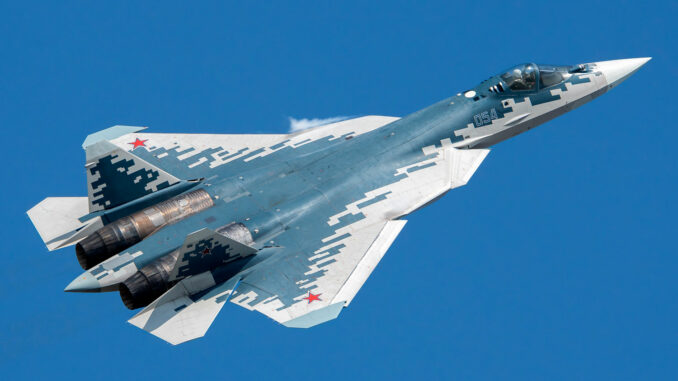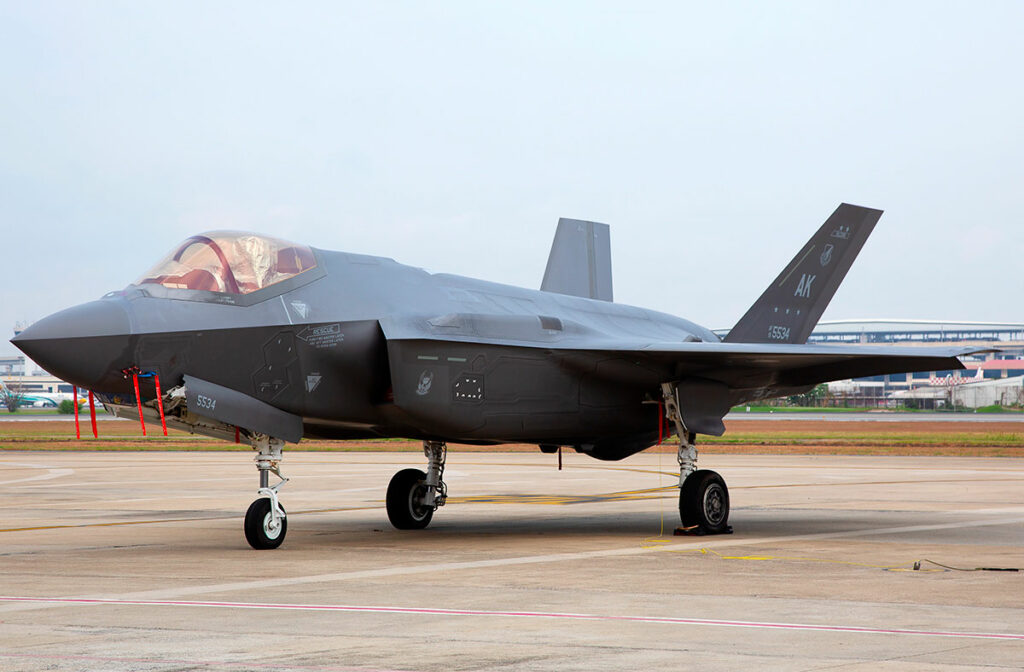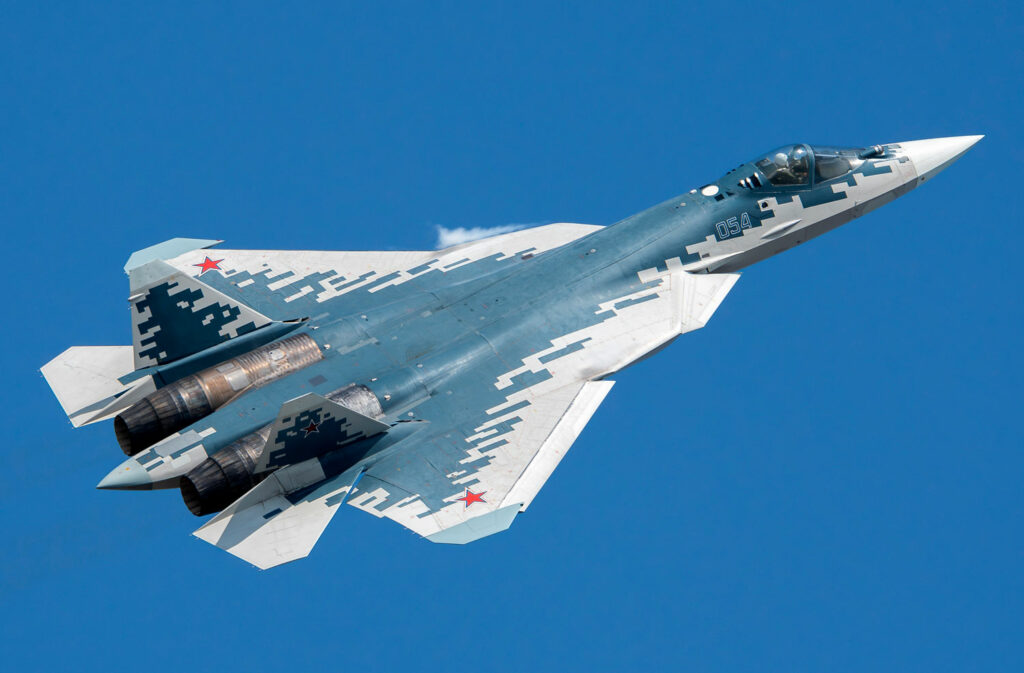
Detailed comparison of the stealth capabilities of the Su-57 and F-35 fighter jets in a real-life scenario, with technical data and strategic analyses.
In the field of modern fighter aircraft, stealth is a decisive criterion. The Russian Sukhoi Su-57 and the American Lockheed Martin F-35, both classified as fifth-generation stealth aircraft, embody distinct design philosophies. Their ability to evade enemy radar directly influences their combat effectiveness. But how well do these aircraft really perform in a stealth mode in a real operational scenario? This detailed technical analysis compares their characteristics, draws on numerical data and explores the strategic implications. The aim is to offer an accurate, unbiased assessment for military aviation enthusiasts and professionals in the sector. By examining the design, materials, electronic systems and contexts of use, this article aims to clarify the strengths and limitations of each fighter aircraft, while taking into account the realities of the contemporary battlefield.

Stealth design: principles and differences
The stealth of a fighter aircraft is based on three pillars: geometry, absorbent materials and electronic countermeasures. The F-35, designed by Lockheed Martin, favors an integrated approach. Its airframe adopts precise angles to deflect radar waves, with a radar cross-section (RCS) estimated at between 0.001 and 0.005 m² in the front hemisphere. The panels are aligned to minimize reflections, and the S-shaped air intakes mask the engine blades. Composite materials and absorbent coatings further reduce the radar signature, particularly in the X and S bands, used by most modern radars. The F-35 also incorporates advanced electronic warfare systems, such as the AN/ASQ-239 Barracuda, which jams enemy sensors.
The Sukhoi Su-57 takes a different approach. Its geometry is less optimized for all-round stealth. Its RCS estimates vary between 0.1 and 1 m², or 20 to 200 times more than that of the F-35. The vector thrust nozzles, inherited from the Su-37, expose reflective surfaces, and the internal weapon housings do not cover all possible armaments. Composite materials are used, but the special polymer coatings, introduced in 2020, seem less advanced than those of the F-35. The Sh121 radar, with its active antennas, offers robust detection capabilities but can increase the electromagnetic signature in active mode. In short, the F-35 excels in frontal stealth, while the Su-57 relies on partial stealth, compensated for by its maneuverability and countermeasures.
This difference reflects strategic choices. The F-35 is designed to penetrate dense air defenses, while the Su-57 often operates under the protection of Russian ground-to-air systems, such as the S-400. In a real scenario, the F-35’s stealth gives it an initial advantage, but the robustness of the Su-57 can balance the situation in prolonged engagements.
Performance in an operational scenario
In a real scenario, the stealth of a stealth aircraft depends on the context: type of mission, electromagnetic environment and adversary. Let’s take a ground attack mission against an integrated defense. The F-35, thanks to its low SER, can approach within 50 km of an X-band radar without being detected, according to open simulations. Its sensor fusion system, integrating the APG-81 radar and the EOTS electro-optical system, enables it to identify targets at long range while remaining discreet. Air-to-ground missiles, such as the JSM (range of 280 km), reinforce its ability to strike without exposing itself. In case of detection, its electronic countermeasures make locking on difficult.
The Su-57, with a higher SER, risks detection at 100-150 km by an equivalent radar. Its long-range missiles, such as the Kh-59MK2 (290 km), offer a comparable range, but its weapon bays limit the payload to around 4 internal missiles, compared to 6 for the F-35A. The Su-57’s electronic warfare system, based on the L402 Himalayas, can jam effectively, but its activation betrays its position. In air-to-air combat, the maneuverability of the Su-57 (vector thrust, maximum speed of 2,600 km/h) gives it an advantage in close combat, but the stealth of the F-35 favors engagements beyond visual range (BVR), with missiles such as the AIM-120D (180 km).
A concrete example: in Ukraine, Su-57s are said to have launched missiles from Russian airspace, avoiding areas with high radar density. This suggests limited operational stealth against modern systems such as the Patriot. The F-35, tested in exercises such as Red Flag, demonstrates an ability to operate in contested environments, but its dependence on data networks can be a weakness if these are jammed.
The limitations and constraints of the two aircraft
No stealth aircraft is invisible. The F-35, despite its low RCS, remains detectable by low-frequency radars (L-band or VHF), such as the Russian Nebo-M, at distances of 200 km or more. These less accurate systems are sufficient to guide long-range missiles. In addition, its infrared signature, although reduced, can be picked up by modern sensors, such as those of the Russian Su-35S. The cost of the F-35, around 80 million euros per unit (2025), limits its deployment in large numbers, and its complex maintenance (30 hours per flight hour) can reduce its availability in extended campaigns.
The Su-57, estimated at 35 million euros, is more affordable, but its production is slow: only 22 aircraft delivered by the end of 2024, compared to more than 1,000 F-35s. Its partial stealth makes it vulnerable to Western AESA radars, such as those of the F-22 or Typhoon. Delays in the development of the AL-51F1 engine, which is supposed to improve the thermal signature, are hampering its performance. In addition, the lack of significant exports (India and Algeria have declined) limits operational feedback. In a real-life scenario, the Su-57 relies heavily on surface-to-air systems to compensate for its stealth deficiencies, which limits its flexibility.
A critical point: stealth depends on maintenance. The F-35’s coatings require frequent repairs, while the exposed screws and poorly fitted panels of the Su-57, observed at the Zhuhai Airshow 2024, suggest imperfect finishes, increasing its SER in real conditions.

The strategic implications
Stealth influences military doctrine. The F-35, designed for NATO interoperability, excels in network operations. Its ability to share data with AWACS, drones or other F-35s amplifies its effectiveness. In a real scenario, it can neutralize key targets before the enemy reacts, as in exercises simulating strikes in the Asia-Pacific region. However, its cost and logistical complexity limit its use by less wealthy nations.
The Su-57, designed for Russia, is part of a defensive doctrine. Its partial stealth is compensated for by ground-to-air systems and 4th generation fighters, such as the Su-35S. In the event of a conflict with NATO, the Su-57 could saturate defenses with combined attacks with S-70 Okhotnik drones, controlled at 1,500 km. But its low production and lack of real combat testing (only 10 operational aircraft in 2023) limit its strategic impact.
The F-35 dominates in pure stealth, but the Su-57 offers a viable alternative in contexts where maneuverability and countermeasures take precedence. The choice depends on the theater of operations and the resources available. A direct conflict would likely reveal the F-35’s initial advantage, but the Su-57’s resilience could balance the forces in the long term.
War Wings Daily is an independant magazine.